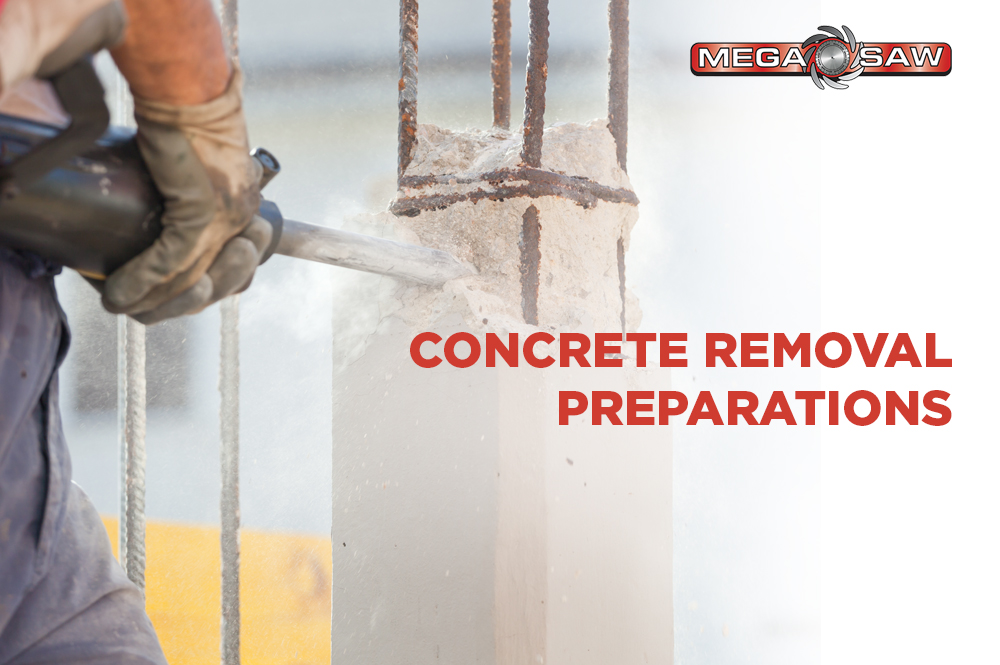
Concrete Removal Health Risks
Concrete demolition, removal and disposal pose health and environmental risk to you and the neighbourhood.
For concrete removal, the risks include:
-
IRRITATION OF AIRWAYS
This is caused by the dust (airborne particles) produced during concrete removal.
An irritation can exacerbate conditions such as asthma and other disorders of the airways.
-
HISTOPLASMOSIS
This is a lesser-known infectious disease that is contracted when fungus spores are inhaled. These spores are commonly found in bird droppings and bat excrement.
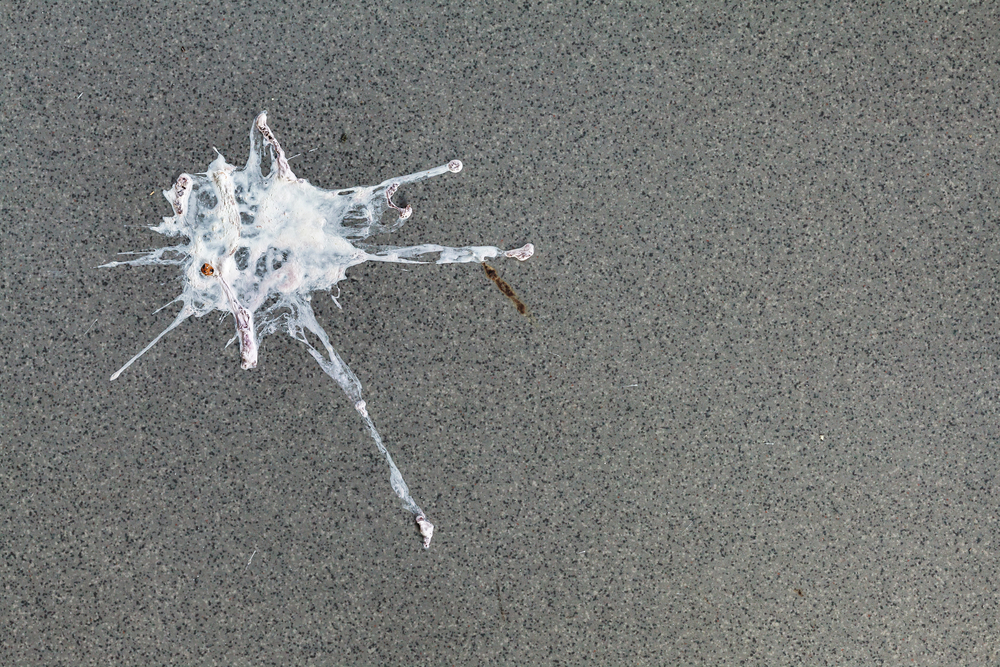
Concrete demolition work is the trigger that sends the fungus into the air. Inhaling the fungus causes a variety of symptoms, though it primarily affects the lungs.
Histoplasmosis resembles tuberculosis. The disease gets worse over time and will affect other organs. If untreated, this disease can be fatal.
-
SILICOSIS
Concrete contains silica.

Crystalline silica is quite toxic and causes silicosis, an irreversible and disabling lung condition.
RELATED
-
Most Common Concrete Cutting and Drilling Hazards and Their Solutions
-
Protecting Passersby During Concrete Cutting and Demolition Work
Machine Used in Concrete Removal
Professional concrete removal services typically use hydraulic, petrol and electric driven hand saws and road saws to cut sections of the concrete into smaller manageable blocks.
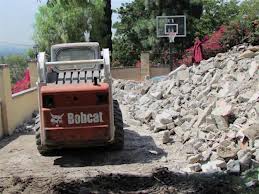 The concrete blocks can then be removed by a bobcat, a forklift or simply by hand. They are removed from the site in concrete recycle bins. Slurry produced from the removal can be taken off by using a suitable slurry extraction vacuum.
The concrete blocks can then be removed by a bobcat, a forklift or simply by hand. They are removed from the site in concrete recycle bins. Slurry produced from the removal can be taken off by using a suitable slurry extraction vacuum.
Concrete removal can also be a do-it-yourself kind of work. There are a number of tools you can use to remove concrete on your own. Here are some of them.
-
SLEDGEHAMMER
This would be your concrete demolition weapon.
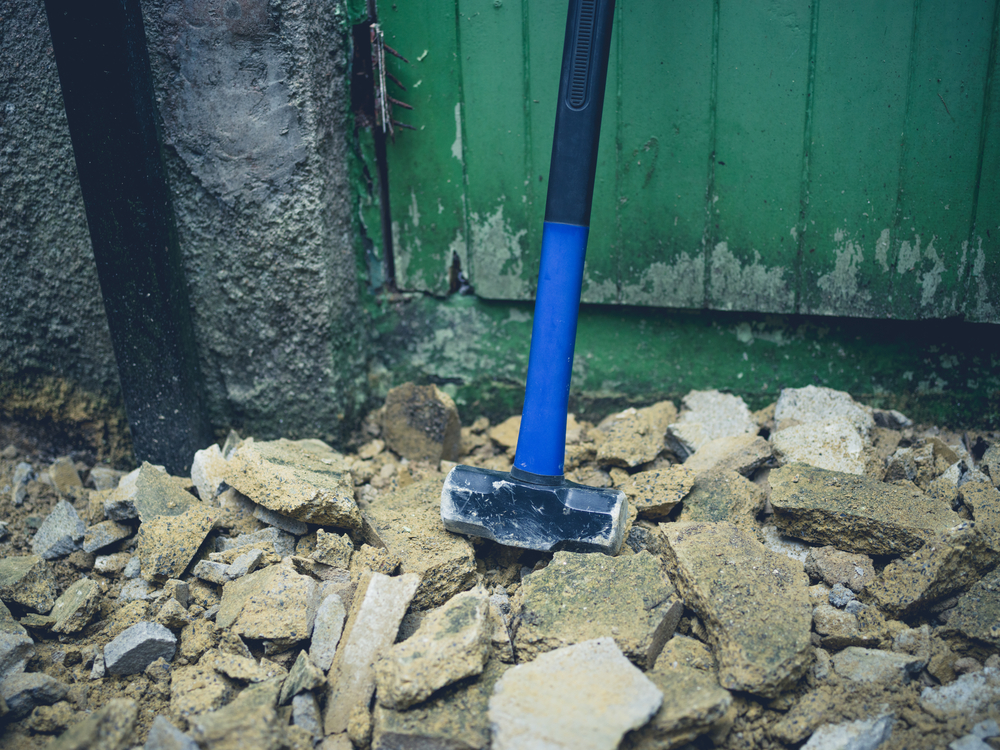
Decide whether your sledgehammer will be enough or whether you’ll need a jackhammer by experimenting with a few whacks a few days before your full-scale demolition starts.
If the slab comes out fairly easily then the sledgehammer will be your tool. Otherwise you’ll need to rent a jackhammer.
-
JACKHAMMER
This should be much easier since it uses electricity.
When removing concrete, you would only need the bit with chisel-point tip. This bit makes it easy because it concentrates the jackhammer’s force to a single point, making the concrete crack more quickly.
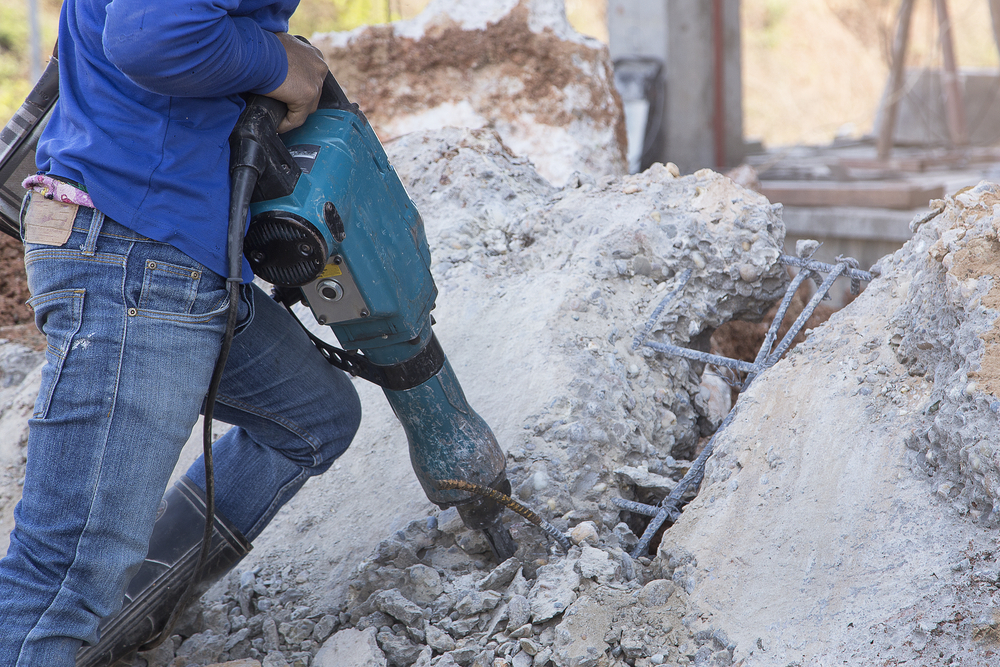
Caveat: Do not try to crack off large pieces, lest the jackhammer get stuck in the slab. It is therefore best to crack the concrete gradually take small bites with the jackhammer to crack the concrete with ease.
-
BOLT CUTTER
Slabs typically contain reinforcing steel mesh used to resist cracking, a big headache at the time of concrete removal.
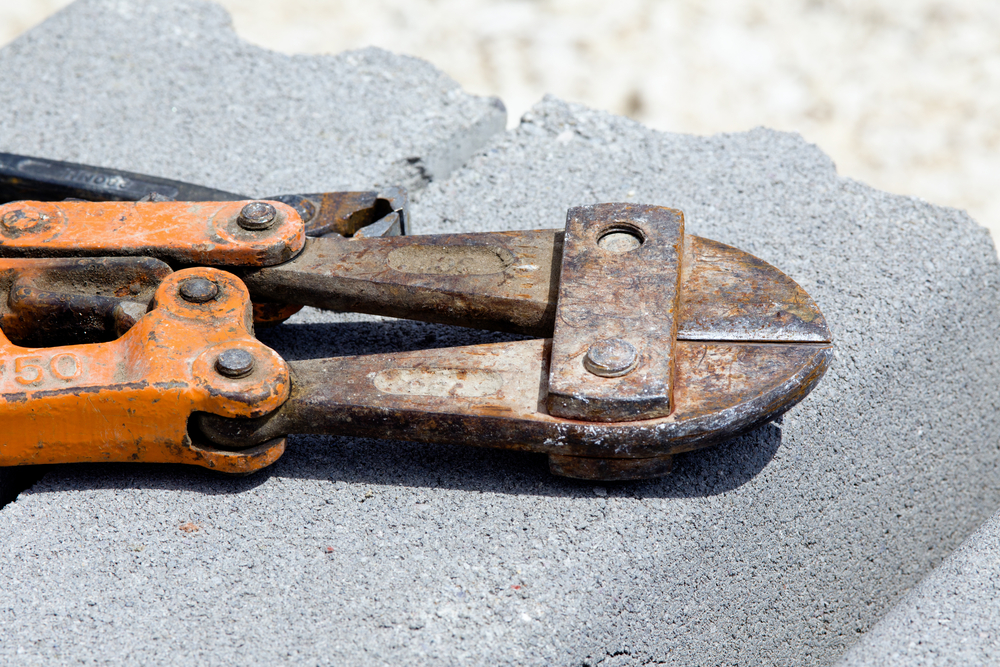
For this, crack smaller sections of the concrete and snip the wire with a bolt cutter.
Preparations before concrete removal
Anyone can remove concrete, provided he/she is prepared and have the right tools.
Most health risks are brought by dust. But this can be easily countered by wearing the right protective gear.
Here’s what you need to be properly equipped:
-
A heavy duty wheelbarrow
-
12-lb sledgehammer
-
Pry bar measuring 5 to 6 feet long
-
Bolt cutter
-
A mattock
-
A jackhammer (optional)
The proper gear is composed of the following:
-
A pair of leather gloves
-
Safety glasses
-
Face shield
-
Hearing protection
-
Safety boots
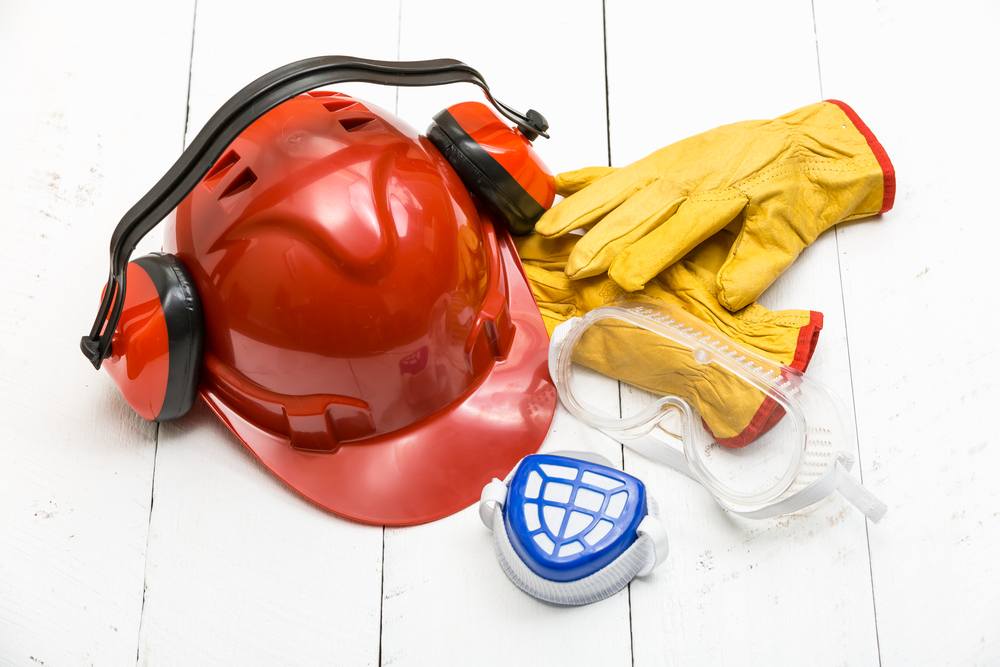
You may also need a crew to help you. You can have at least two people break up the concrete while the rest haul away the rubble.
After gathering the necessary equipment and manpower, look to contain flying shrapnel.
One way to do this is by rolling a thick polyethylene over the sidewalk or patio. This will cover the concrete while you hammer it.
Finally, make your disposal plan one week before removing the concrete. One option is enlisting the services of concrete recyclers by searching for ‘recycling services’ on the Internet.
Alternatively, you can rent a trash container for the same. You can find them in the yellow pages.
Provide the waste haulers with the dimensions and thickness of the patio to be removed and let them determine the right container size for your job on their own.
Now that you’re ready, here are some points to note when removing the concrete.
The concrete chunks will typically remain locked together even after breaking them. This will make the surrounding concrete more difficult to break.
Clearing the rubble away after breaking up about 2 to 3 feet portions will make the work much easier.
Above all, ensure you wear a complete protective gear to protect your feet, hands, nostrils, hearing, head and face or eyes from any form of injury. With the right gear, you won’t have to worry about the dangers of demolished concrete.
RELATED
When a DIY isn’t an option…
If instead of doing it yourself, choose to hire a company that has a proven record in concrete removal like Megasaw.
Why Megasaw Concrete Removal Service?
The company has the equipment, expertise and most importantly the experience to handle any concrete cutting and removal project.
More importantly, MegaSaw technicians take additional precautions to protect the surrounding structures from damage during the concrete demolishing and removal process.
Read more of concrete removal service we offered.
Conclusion
Whether you do it yourself or hire a professional concrete removal service, adequate preparation is necessary to ensure the best results and minimal health and environmental harm during concrete removal.
